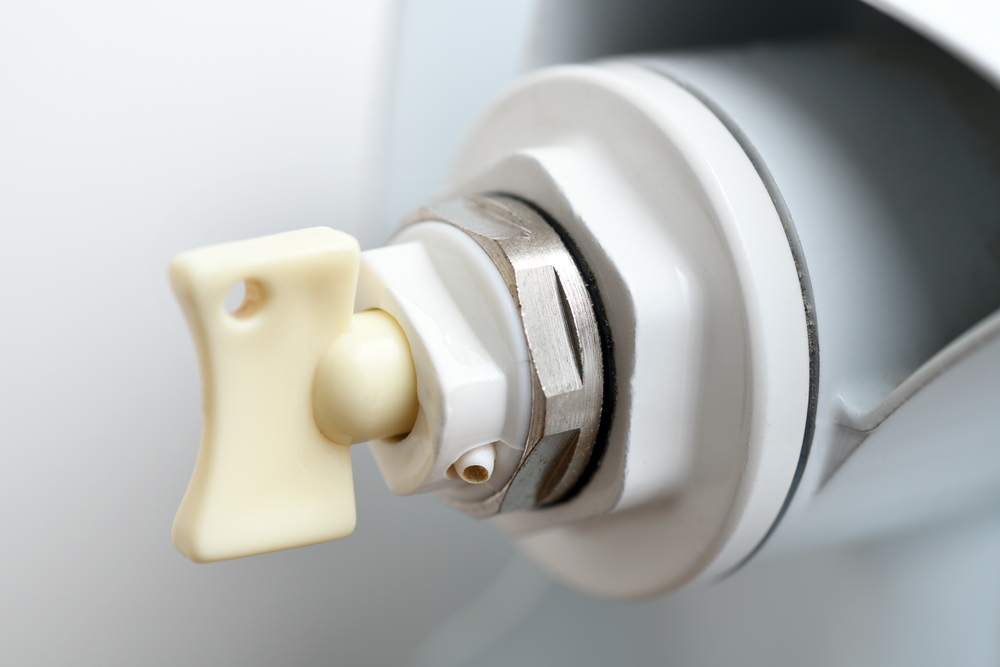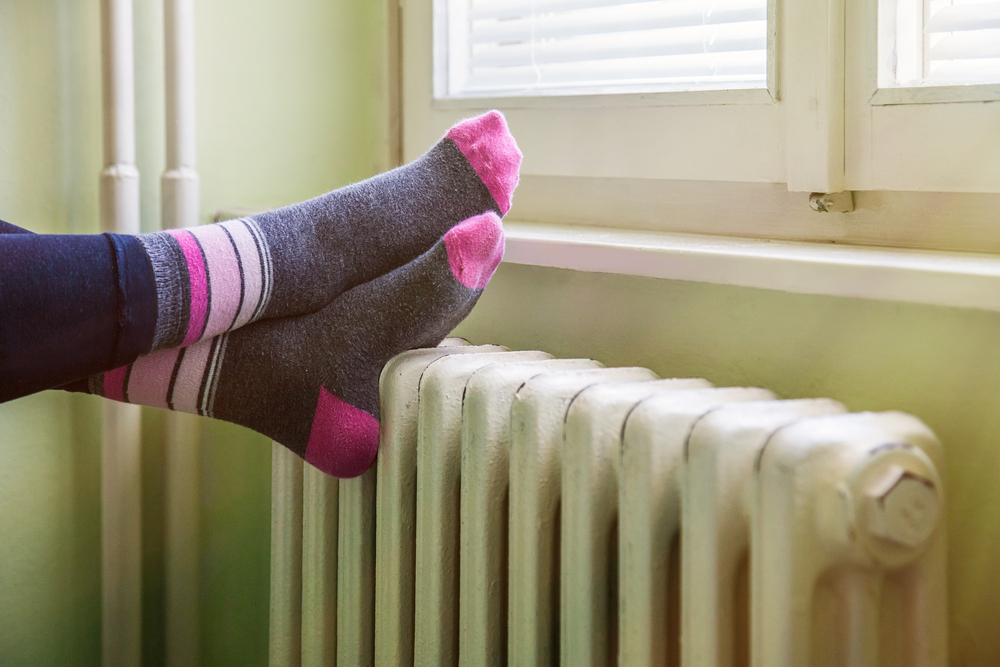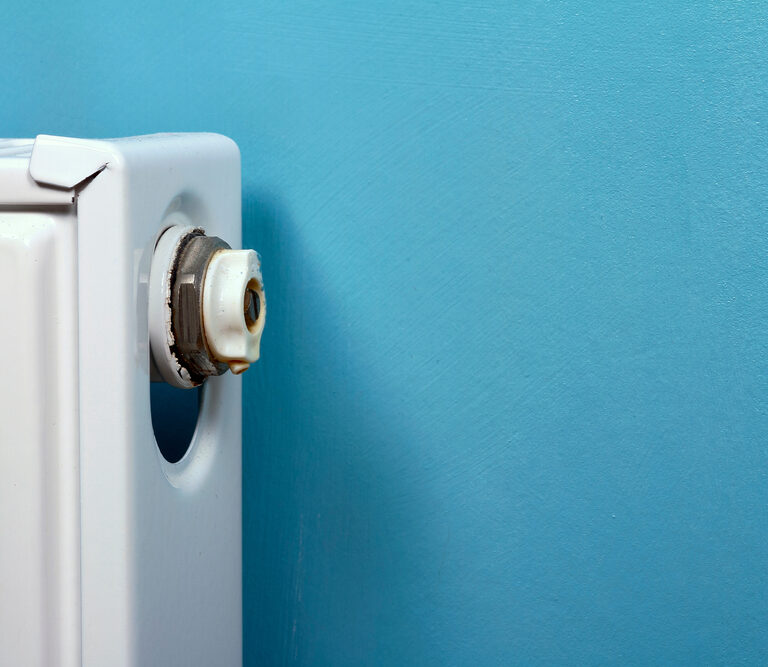Bleeding radiators is one of those weird household jobs that everyone seems to understand but you. A legendary rite of passage for grandpas around the world, bleeding radiators sounds like a complicated, intimidating, intense job, but it really isn’t.
It’s quick, easy, fuss-free and simple to understand – and we’ve got all the information you need to help you do it.
Here’s everything you need to know about how to bleed a radiator…
Why Radiators Need Bleeding
Hold up, you enthusiastic little DIYer. Before we teach you how to bleed your radiator, we need to work out if your radiator really needs bleeding (not that we don’t trust you).
Here are the four main signs that your radiator needs bleeding:
- The top of the radiator is routinely colder than the bottom (this is the most common sign).
- Your radiator isn’t heating up at all, even though your heating system is turned on.
- Your radiator is taking a long time to heat up.
- Your radiator is making banging, clanking, annoying noises.
These things happen because air bubbles form inside the radiator, stopping hot water from moving freely through it. Air bubbles form inside radiators because:
- Routine maintenance has been undertaken.
- New water has been pumped into the radiator from a tank.
- There’s been internal movement in the radiator.
In short, it’s very normal for air bubbles to get trapped inside your radiator, as many innocuous things can cause it to happen. It’s nothing to worry about, but it is something which regularly needs checking and fixing.
If you have a suspicion that your radiators need bleeding, but you aren’t 100% sure, you should check them. To check if your radiators need bleeding, follow these steps:
- Turn your central heating on to maximum (and give it a few minutes to start working properly).
- Feel along the top of every single radiator in your home, checking for any cold areas (big and small) as you go.
- Can you feel any cold areas? If you can, it’s time for some bleeding, baby!
If you’ve established that you do indeed need to bleed one (or some) of your radiators, here’s how to do it…
How to Bleed a Radiator – Our Step-By-Step Guide

1. Assemble Your Equipment
Bleeding a radiator is the ultimate entry-level DIY job, as you don’t need much stuff to do it. Grab the following:
- Cleaning cloths.
- A big bucket (make sure it’ll fit under your radiator valve).
- A radiator key. Something like this Wal-Rich radiator key set should help you get the job done (but go for something slightly sturdier if your valves are very tight).
- If you want to be super careful, you might want to wear some rubber gloves.
You should also check your boiler pressure and make note of the number. You’ll need this number later.
2. Turn Off Your Heating
This stage is very important. Don’t skip it.
Turning off your heating will keep you safe – if you don’t do it, you might get hot water spraying everywhere. If you don’t turn off your heating, you also run the risk of allowing more air into your radiators, exacerbating the very problem you’re trying to solve. So just turn off that heating.
3. Locate Your Valve
The radiator valve is pretty much always at the side of your radiator, and usually at the top or bottom, so look at the “corners” of your radiator to find your bleed valve. It will probably look something like the picture a few paragraphs above, which features a bleed valve with a key in it.
Place your cloths and bucket under the valve (since this is where any leaking will come from), and insert your key into your valve. It’s time to start bleeding.
4. Bleeding Your Radiator
We’ve reached the exciting part. Let the bleeding begin.
Take your radiator key, and rotate your valve half a turn (usually counterclockwise).
You’ll know something is happening when the valve loosens, and when you begin to hear some hissing noises. That hissing is the excess air escaping (hooray!). It will usually take around 30 seconds for all the air to escape, but it’ll sometimes take up to a minute (or even longer if the radiator hasn’t been bled for a while).
Listen carefully for the hissing to start diminishing. As the air finishes escaping, the hissing will stop, which means that the radiator has been fully bled. When the air has finished escaping, water will start coming out of the radiator, so have your bucket ready, and your cloth in your hand. The moment any steady flow of water starts emerging, you know your job is over.
Tighten the valve back up and tidy away your equipment.
5. Turn Your Heating Back On
It’s time to see if your DIY adventure has been a success. Turn your heating back on. If your radiator heats up evenly, fully, and properly, congratulations – you’ve just successfully bled a radiator.
6. Check Your Boiler Pressure
Remember when you checked your boiler pressure before? Here’s why.
When you’ve finished bleeding your radiators, make sure your boiler is functioning properly by checking its pressure. It should be a similar pressure as before. When you bleed your radiators, you can inadvertently lower the pressure in your boilers, so this stage is important.
For a normal two-story family-sized house, your pressure should be running at around 12 psi to 15 psi, but your boiler’s manual should have more information.
If your boiler pressure has dropped, rebalance it with the lever or the tap on the boiler (this little tap or lever is called a “filling loop.” See, we teach you things here at Tool Digest).
If any of the above is unclear, this video offers an excellent, short visual guide to bleeding radiators.
Pro-Tip: It’s best to bleed all the radiators in your home at the same time, to make sure they’re all working properly. Sure, you might have noticed that one particular radiator isn’t working, but it’s likely that none of your radiators are working at 100% if they haven’t been bled for a while.
If you decide to tackle the odyssey-like venture of bleeding all your radiators at once, there’s a specific order you should do it in. Start with the radiator that is furthest from your boiler, and move one by one until you reach the radiator that is closest to your boiler.
It’s important to work in this order, as the radiators furthest from the boiler are the ones which receive the water last.
I’m in a Hurry and I Don’t Have a Radiator Key – Is There Anything Else I Can Use Instead?
It’s best to use a radiator key if you can (since they’re specifically crafted for the job), so you should invest in some.
But if you’re in a hurry to bleed a radiator right now, you can use a flathead screwdriver, needle-nose pliers or some other type of narrow pliers. Just be careful when you use anything other than a radiator key, as you can damage the valve, and you’ll make it much harder to turn your valve in the future.
Advantages of Bleeding Radiators

If you know how to bleed a radiator properly, here’s how you’ll benefit:
- More money. Most obviously, you won’t need to pay a professional, so you’ll save money by doing the job yourself.
- Lower bills. If your radiators aren’t working properly, you’ll need to turn up your heating to compensate for the lost heat. But if you keep your radiators working properly, you can avoid this problem and save lots of money.
- Radiator health. If you’re maintaining your radiators properly, they’ll last longer, so you won’t need to frequently (and expensively) maintain them.
- Warmer rooms. If you’re bleeding your radiators properly and routinely, they’ll work better, and they’ll heat your home evenly and properly.
You should bleed your radiators at least once a year, even if they don’t necessarily need bleeding. Some people even check their radiators every 3-6 months, which can massively help to keep bills down. If you’re on a budget, bleeding your radiators regularly is a great household hack for lowering your bills.
Bleed the Way
There you have it – how to bleed a radiator! See, we told you it was simple.
If you bleed your radiators regularly and routinely, you’ll have lower bills, warmer rooms, healthier radiators, and less chances of big breakdowns. It’s the ultimate easy household job, and now you know how to do it. Happy bleeding!
If you want any other household tips, stick with us. We’re your ultimate bumper package of DIY tips, hacks, information, and how-to-guides.
